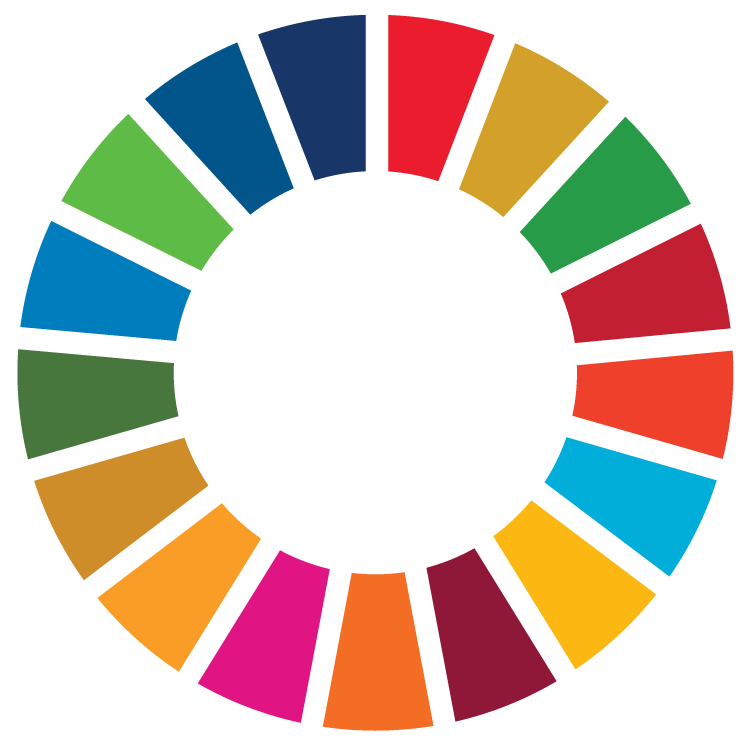
Text traduït
Aquesta assignatura s'imparteix en espanyol. El pla docent en català és una traducció de l'espanyol.
La traducció al català està actualitzada i és equivalent a l'original.
Si ho prefereixes, consulta la traducció!
Texto original
Esta asignatura se imparte en español. El texto original de este plan docente es en español.
Text created with automatic translation
The language of instruction of this subject is Spanish. The course guide in English is an automatic translation of the version in Spanish.
Automatic translation may contain errors and gaps. Refer to it as non-binding orientation only!
Perhaps you should consult the original version of the text!
Course
Audiovisual Communication
Subject
Digital Art and New Media
Type
Compulsory (CO)
Academic year
4
Credits
3.0
Semester
2nd
| Group | Language of instruction | Teachers |
|---|---|---|
| G11, classroom instruction, mornings | Spanish | Francisco Javier Hurtado Mompeó |
Sustainable Development Goals (SDG)

- 5. Gender equality
- 16. Peace, justice and strong institutions
Objectives
- To train students in the knowledge of digital art and new media creation in relation to the territories of art and audiovisual communication.
- Review the main theoretical lines, influences, and the work of contemporary creators, with special emphasis on the implementation of projects through the use of new technological possibilities as a support.
Learning outcomes
- Analyze knowledge specific to your cultural environment and its contextualization in national and international environments.
- Learn about the applications of digital art in contemporary communication.
- Performs the technical organization of sound and visual materials for the development of audiovisual and multimedia products.
Competencies
General skills
- Organize and plan tasks related to professional performance through proper time management and timing of these tasks.
Specific skills
- Master audiovisual and multimedia technology and apply it to the different stages in the creative process and thus be able to adapt to different work environments.
- Operate in a variety of computer and digital environments for traditional communication disciplines, in written and audiovisual formats, and also in new online contexts.
- Transfer knowledge of history, languages, communication theories and models, and also of art history and image theories.
Basic skills
- Students can apply their knowledge to their work or vocation in a professional manner and have competencies typically demonstrated through drafting and defending arguments and solving problems in their field of study.
- Students have demonstrated knowledge and understanding in a field of study that builds on general secondary education with the support of advanced textbooks and knowledge of the latest advances in this field of study.
Core skills
- Interact in international and worldwide contexts to identify needs and and new contexts for knowledge transfer to current and emerging fields of professional development, with the ability to adapt to and independently manage professional and research processes.
Content
- Digital technology as a device (perceptual, representational and discursive)
- Introduction to the historical context (of the mainframe to the microcomputer). GUI development. Interaction and interfaces. From the desktop to the tangible user interfaces
- New narrative and conceptual possibilities in art brought about by interaction and interfaces
- Principles. Terminology. Influences
- Pioneers, precursors. Review of historical forms
- Single-channel work
- Interactive video. Net art, hacktivism, game modifiers, webdoc or transmedia
- Expanded work
- Interactive installation (VR, AR), performance, robotics, life cinema / vjing, public art (mapping), experimental theater and dance
- Single-channel work
- Theoretical trends (aesthetic, narrative and political issues in a society mediated by technology)
- Internarratives (around interaction/navigation)
- Control/surveillance/disinformation
- Post-referentiality (post-photography)
- Identity issues: Virtual vs. real
- Public/private
- Post-digital culture
- Work/author/archive (internet as an infinite archive)
- Internet, new remix culture. Appropriationisms / sharing culture, free culture (social networks) and culture jamming
Projects
- Creating a "virtual conversation" with programs presented in class. An interactive self-portrait. Developing an interface and creating interaction.
- I work with archive material. We search for videos on YouTube, Vimeo, or reference sites and carry out a collage (the possibilities for developing the work arise as the content is presented in class and also when the viewings are carried out).
Evaluation
- Attendance: 10%
- Participation observation: 5%
- Monitoring of work done: 5%
- Completion of the first exercise: 40%
- Completion of the second exercise: 40%
Project development
- Creating a "virtual conversation" with programs presented in class. An interactive self-portrait. Developing an interface and creating interaction.
- I work with archive material. We search for videos on YouTube, Vimeo, or reference sites and carry out a collage (the possibilities for developing the work arise as the content is presented in class and also when the viewings are carried out).
Methodology
Theoretical presentations are given on the content covered in the course syllabus. Specific technical knowledge is taught. Viewings of artistic works are also included. All of this is combined in different ways in each session to encourage students to generate their own theoretical discourse and creative work.
The student must complete the two exercises outside of class time.
Two sessions are for the collective presentation of two exercises to be performed.
Bibliography
Key references
- Guardiola, I. (2019). El ojo y la Navaja. Un ensayo del mundo como interfaz. Arcadia.
- Landow, G. P. (2005). Hipertexto 3.0: teoría crítica y nuevos medios en la era de la globalización. Paidós.
- Laurel, B. (1990). Computer as Theatre. Addison-Wesley.
- Manovich, L. (2005). El Lenguaje de los nuevos medios de comunicación. La imagen en la era digital. Paidós.
- Riesser, M., Zapp, A. (2004). New Screen Media. Cinema Art / Narrative. BFI Publishing.
Further reading
Teachers will provide complementary bibliography and compulsory reading throughout the course via the Virtual Campus.